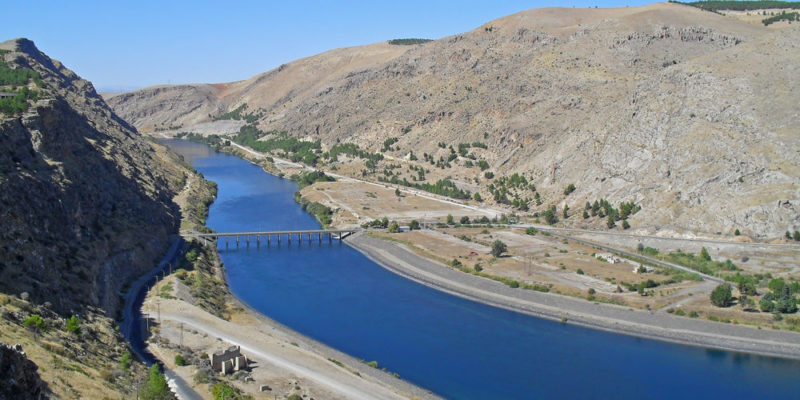We explain what the Mesopotamian civilization was and its origin. In addition, its characteristics, cultures that shaped it and its contributions.
Mesopotamian civilization
The Mesopotamian civilization took place around 4000 BC. C. and corresponds to the first populations with permanent settlements. It was established in a very fertile territory, between the Tigris and Euphrates rivers, the current region of Iraq. Hence the origin of the name Mesopotamia which means "land between rivers".
Among the main populations, the Sumerian , the Assyrian, the Akkadian and the Babylonian stood out , who developed sophisticated agricultural techniques taking advantage of the flooding of the rivers, which allowed them to establish cities with a high population density.
Origin of the Mesopotamian civilization

The origin of the Mesopotamian civilization dates back to prehistory , especially the late Neolithic period , an era in which humans lived nomadically in small groups and engaged in hunting or gathering.
In a region that did not present the best conditions, they knew how to take advantage of the channels of the Tigris and Euphrates rivers to irrigate crops and developed agriculture and animal husbandry , being able to supply food to a large population.
This civilization began to build the first stable towns . The beginning of human settlements was a transformation that marked a before and after in history , which continued to develop throughout the world until today.
Characteristics of the Mesopotamian civilization
The Mesopotamian civilization was characterized by:
- Agriculture and animal husbandry, leaving hunting and gathering in the background.
- The new social structure with a large population organized by families and by the division of labor.
- The multiple own cultures that, in addition, intersected with the neighboring civilizations of Egypt and the Indus Valley.
- The diversity of peoples who inhabited it, such as the Sumerians, the Akkadians, the Assyrians and the Babylonians.
- The development of important knowledge about mathematics , astronomy and architecture . In addition, they created the first cuneiform writing system.
- The creation of the oldest legal document made up of laws written on stone and clay tablets, during the time of the Babylonians.
- The polytheistic religion in which they worshiped various gods that had different ranks of importance. Each god had a temple and a certain ritual.
Mesopotamian cultures

The Mesopotamian cultures were various and differed in origin and lifestyle, both nomadic and sedentary. Among the main cultures are:
- Umm, Hassuna, Tell Halaf and Samarra. They were the first tribes to settle in the region.
- Sumerian. It was the first great civilization that developed an important city. The Sumerians, who are believed to have come from Central Asia , settled in southern Mesopotamian and reached a high level of development, forming the first great civilization. They created canals that made it possible to harness the water from the rivers and develop larger-scale agriculture. Its social organization was made up of several independent walled cities.
- Akkadian, Assyrian and Babylonian. They were great empires of Mesopotamia that disputed power through bloody clashes. The Akkadians inhabited northern Mesopotamian and settled almost parallel to the development of the Sumerians. King Sargon attempted to build a unified kingdom with the Sumerians and in 2350 B.C. C. formed a new great empire that lasted until his death. The Assyrians were the most indomitable people and the ones that triggered the most violent clashes. They attacked the Babylonian Empire located in the center of Mesopotamia. The Babylonians allied themselves with several neighboring populations and managed to put an end to Assyrian power, dominating southern Mesopotamian through a stable kingdom.
- Hittite and Persian. They were Indo-European populations, that is, from Asia, who invaded the region. Around 550 BC C. a people from northern Mesopotamian called the Persians led by Emperor Cyrus II rebelled against the power of the Babylonian rulers. The Persians formed a new empire that lasted about 300 years. The kings who succeeded Cyrus led a life of boundless opulence that triggered a decline for civilization, making it vulnerable to further attacks and invasions from peoples such as the Parthians, Romans, and Arabs.
Contributions of the Mesopotamian civilization

Among the main contributions of the Mesopotamian civilization are:
- The writing system. It consisted of the first vestige of writing, even before the Egyptian hieroglyphic system. It was called cuneiform writing because of the wedge shape of the symbols.
- The code of laws. It consisted of a set of laws written in the Semitic language, on stone or clay tablets. It was called Hammurabi's code. It presented different punishments for the same crime, depending on social class .
- The Mesopotamian calendar. It represented two seasons: summer and winter, the beginning of the year corresponded with the spring equinox, during the first lunar crescent.
- knowledge of astronomy. The evidence reflects that they believed in a planetary system and that the Earth revolved around a luminous star.
Passionate about understanding and contributing to a world that does not stop changing. New forms of Work, Sustainability and Technology. For many years he has worked as a creative for large international companies. He has a Ph.D. in information technology and he has been doing quantitative research in the interdisciplinary areas of information systems, cyber security, data analytics and artificial intelligence. He continue to look for creative solutions through technology to help companies to be more humane and sustainable..
Leave a reply
Your email address will not be published. Required fields are marked *Recent post

Sport: What Is It, Types, Risks, Features, Characteristics and Examples

Dogs: Emergence, Features, Characteristics, Feeding and Breeds

Story: Definition, Elements, Structure, Features and Characteristics

